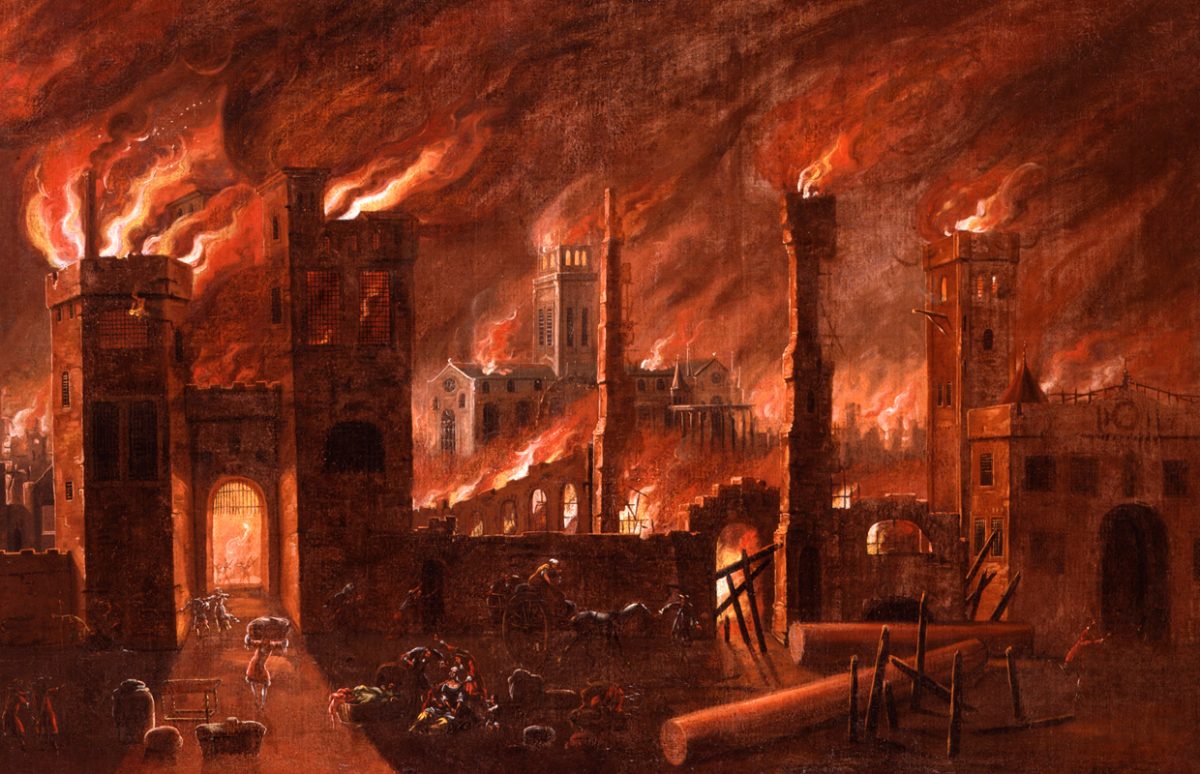2-6 September 2016 marks the 350th anniversary of the Great Fire of London.
The fire was a major trauma for the city, and a watershed after which the old, wooden, medieval city made way for a more modern city made of stone.
The fire started in the early hours of the morning in the royal bakery in – where else? – Pudding Lane. The whole street was soon alight and the fire raged out of control. The wind fanned the flames. There was no such thing as a fire brigade, so it was up to ordinary citizens to fight the fire, passing buckets of water from hand to hand from the Thames to the fire.
When the bucket chains didn't work, King Charles II ordered that buildings be blown up with explosives to try to create fire breaks: empty spaces with little wood for the fire to consume. It was a standard technique, but this fire was too much for it. It had already reached the river and even burned London Bridge. The population had to take to boats to escape to the far bank.
Documenting the Fire
One of the reasons we have such a clear picture of the Great Fire today is thanks to the diarist Samuel Pepys, a civil servant. Pepys describes the Great Fire like a journalist, but the personal details he gives are fascinating. His house, and the ministry where he worked, were in danger of being destroyed by the fire, and he helped combat it. On 4 September, at 4 a.m. he took objects that were very important to him to a friend's house away from the fire — wearing his nightclothes! That day, he buried some treasures in his garden: his wine and a Parmesan cheese. On the 5th, he took his money and his wife to another friend. His wife had the job of guarding the money.
The Aftermath
Finally, after four days, the wind dropped and the fire died out. It had destroyed 80 per cent of the medieval city and made 100,000 people homeless, a sixth of the population of the capital. Many people lived in tents or temporary homes in the ruins or the countryside in the long, cold winter of 1666. But Londoners set about reconstructing their city, using brick and stone this time, not wood. By 1700, London was the biggest city in northern Europe.
The Silver Lining
The Great Fire caused enormous material damage, but officially only five people died. In fact, many historians think that the fire saved thousands of lives. Like other medieval cities, London had regular epidemics of the bubonic Plague. A particularly terrible epidemic killed 70,000 Londoners in 1665, the year before the fire. But after the fire, the Plague never affected London again.
The Museum of London site has lots of of useful resources about the Fire, including a game that tells the animated of the story, including short simple snippets of Samuel Pepys' diary.





